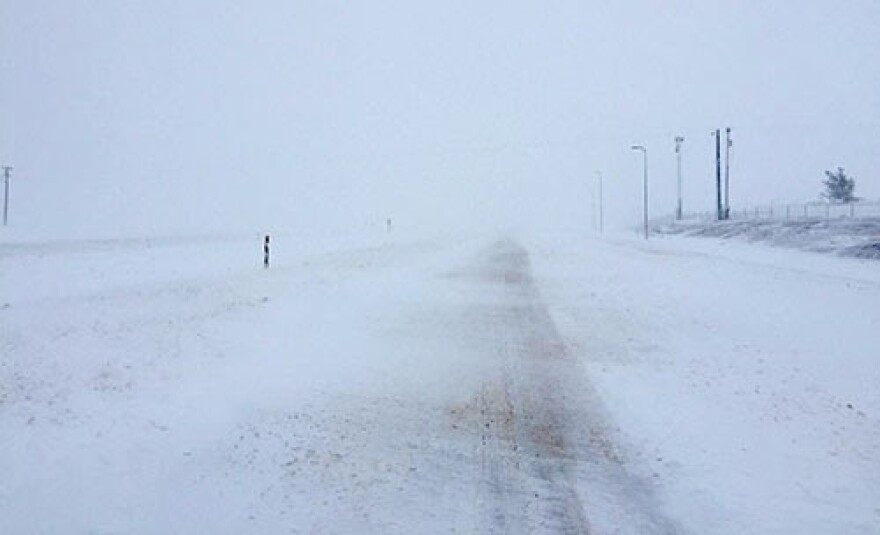A University of Wyoming team is creating an app that they hope will better predict hazardous winter weather across the region.
Current models for Wyoming winter weather are often wrong about when and where dangerous conditions will occur. The goal of the new app is for any traveller to be able to open their phone and be alerted to hazardous driving conditions along their route.
Imagine Wyoming a few months from now, when winter weather sets in. UW atmospheric science graduate student Robert Capella said you might be driving along and run into a surprise.
"You could be driving down I-80 and everything looks all sunny, there's a little cloud you know or an array of clouds ahead of you and you get underneath them," said Capella. "They drop snow, visibility drops, wind is blowing the snow across the roadway, the road is iced over. And all of these things combine to make very hazardous driving conditions."
Capella and the rest of his team are trying to eliminate that surprise. They are partnering with the National Weather Service for a project that graduate student Sarah McCorkle said should be very helpful.
"The overall goal of this project is to improve hazardous winter weather predictions," said McCorkle. "The winters here can be pretty intense as we’re in some complex mountainous terrain and we’re up pretty high."
The predictions will be available to both weather forecasters and the public. Team member Jacob Leuquire said the end goal of the project is a map with detailed information.
"The intention is to have roadway weather mapped out on this webpage so that travellers can get on this webpage and look at conditions for the road specifically per mile marker or every couple miles," said Leuquire.
The team is focused on three specific types of hazardous weather: blowing snow, snow squalls, and extreme wind. McCorkle’s expertise is finding blowing snow.

"I'm taking in images from WYDOT archived datasets and I'm looking through them and seeing if the image is showing blowing snow and how intense is this blowing snow," said McCorkle.
She's training a computer to recognize dangerous blowing snow.
"They're able to decide which features of the image are important and learn from that and then in the future be able to classify images as they come real time," said McCorkle.
Capella, on the other hand, looks at the snow squalls in the region.
"My research is trying to better predict the occurrence of these snow squalls, where they happen, when they happen, and kind of what environments they exist in," said Capella.
Graduate student Ethan Collins is working on predicting extreme winds. He said this can be a hard task because a lot of weather models are based on flatter places.
"Something that's difficult in Wyoming and Colorado is representing the terrain since it's so complex and it changes drastically in small distances," said Collins. "Some of the weather models that we're using or that the weather service uses operationally cannot represent that very well."
Collins said the predictions that will come from their work might end up saving a lot of headache and money on Wyoming highways by preventing tipped over trucks and other crashes.
"By improving the extreme winds and the snow squalls and blowing snow forecasts specifically for I-80, but kind of in our whole region, WYDOT can better close down the roads but also know when to open them up," said Collins.
The project is entering its second year, with a third to follow.
Have a question about this story? Please contact the reporter, Ashley Piccone, at apiccone@uwyo.edu.







